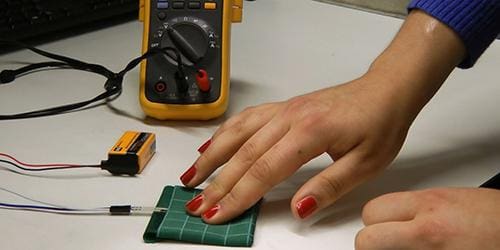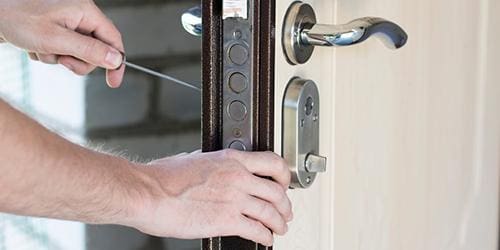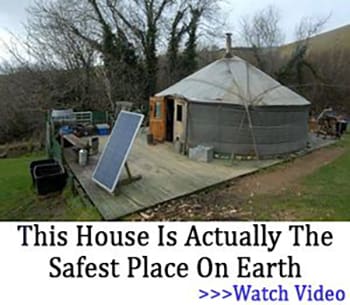In an ideal world, the responsibility falls partly on the state, and partly on yourself. As states descend into chaos or become politically and ideologically compromised, citizens become increasingly responsible for their safety. Recent events confirm this decline and we can see criminal activity increasing wherever we look. This article will tell you how to stay safe and provide security for yourself.
I will cover the basic principles of what it means to secure an area, and look at a few low-cost, practical solutions. The mission objective is to decrease your risk and increase your chances of fending off an attack.
Start at the beginning
You cannot control what you cannot quantify or measure. You need to complete a full risk assessment of your property. Risk assessments are done by attributing a score to two specific criteria. The first score is the likelihood and ease of access to a specific area. The second score is the severity that could result from a breach in that area. The score is out of 10, and the higher the number, the greater the likelihood or severity.
Add the scores from the likelihood and severity assessments. High scoring issues need to be dealt with first.
Let me provide two examples.
Your barn
First Score – Likelihood and Ease of Access
What is the likelihood that someone would want to get into it and how easy would it be? If the barn has no doors and looks like it’s storing expensive items, the likelihood is high, so the score would be between an 8 and a 10.
Second Score – Severity
If you only store animal feed in the barn, the severity is low, score it between 1 and 3.
If your back-up generator is in the barn, if you store ammunition in the barn, the severity is high, score it between an 8 and 10. You may need to store your ammo elsewhere, secure the generator’s fuel, and maybe bolt that generator to the wall or floor.
Your bedroom
First Score – Likelihood and Ease of Access
What is the likelihood that someone would want to get into it, and how easy would it be? If your bedroom is situated on the ground floor, has two large windows and a door that doesn’t lock. The score would be somewhere between 8 and 10.
Second Score – Severity
This is where you sleep, and waking up with an attacker in the room could mean death, so the severity is 10.
You will soon realize that you have a good feeling for where you are vulnerable, and which areas you don’t need to worry about. But the risk assessment may also open your eyes to some high-risk areas that you have been overlooking, or some low-risk area’s that you may be too worried about.
The goal of the risk assessment is to help you get a clear picture of your strengths and weaknesses and to help you to decide where you need to focus your efforts. Start with areas that have the highest scores, and work your way down the list. This process is called corrective action.
Risk assessments should start at the entrance to your property, and factor elements like ease of access by road, ease of access for someone on foot, likely routes intruders may use, etc.
Low Risk & High Score
Intruders like high score & low-risk opportunities. Your first objective should be to remove these or present them as a ruse, or distraction, or a trap of sorts. By creating perceived weak spots or Low Risk & High Reward opportunities, you can maintain some control over a situation. Misleading intruders and keeping high value opportunities secret.
Noise and Animals
Think of your security as consisting of concentric layers, like an onion. The furthest layers should be protected, but contain some kind of early warning system. The closest layers to you should focus on impenetrability.
Early Warning Systems
Your barn must be locked, but also have an alarm system, motion detectors, dogs, or geese. Intruders must create noise while trying to gain access, and once inside, something must warn you that someone is inside.
Many of us remember the movie Home Alone. This well-known comedy and children’s movie does however contain some highly practical advice. A beer can filled with stones, balanced atop a door or placed on a window sill, will fall and create some noise when disturbed. A bucket filled with water swinging on a rope would catch everyone off guard.
Animals are also great early warning systems. Their senses are more acute and can hear noises well below the human range. A small dog sleeping inside your bedroom, with a medium-sized one in the kitchen and a few big dogs keeping watch outside will go a long way too ensuring that you are not caught unawares.
I sleep with a broom stacked up against the inside of my closed bedroom door. There is no way to open the door without letting the broom fall over. Bells on the doors and squeaky floors are simple but effective ways of tracking movement through a house.
Pressure Pads
You can create a simple but highly effective pressure pad alarm to place outside your bedroom door, or anywhere inside your house where intruders might walk. You should be able to find plans or schematics on the web, but the basic idea is to use two sheets of foil separated by a highly porous, very thin, flat piece of foam. Think of the foam used for mattresses or cushions, but much thinner. You can cut holes in the foam to make it more porous.

The pieces of foil are placed on either side of the foam and slipped into a plastic bag or plastic file sleeve. Use a thin wire to connect a 9V battery to the foil, the positive pole onto one sheet, and the negative pole onto the other sheet. Incorporate a beeper or alarm speaker into the circuit. Pressure, like a human foot, will cause the sponge to give way, allowing the foil sheets to touch, closing the circuit, and causing the beeper to ring.
These self-made pressure pads can be placed under carpets or welcome mats, behind vehicle wheels, or even hidden under a thin layer of sand or mulch in your garden. Even if it doesn’t scare an intruder, you will at least have woken one of the dogs or yourself. Chance favors the prepared mind.
Steel Doors and Bars
It’s difficult and expensive to make your entire home impenetrable. But it’s a good idea to have at least one area that cannot be entered into without the use of force. A safe-room is a great option but can be very expensive. You can use sheet metal and deadbolts to fortify your existing bedroom door, making it very hard to kick down or breach in any way.

Steel bars covering your bedroom windows will ensure that no one can enter that way. I have steel bars securing my bedroom windows, but also sleep with a bolt cutter under my bed, in case of a fire, or if I need to get out through the window.
Vigilance and Predictability
Most security systems fail due to a lack of vigilance. Make sure to consistently implement your security measures. Most of us brush our teeth before we go to sleep at night. You should develop the same mentality about your security measures. But be sure to vary your schedule or sequence of implementation. If you take the dogs out every night at 9:30 PM sharp, you could end up having someone training a night vision gun sight onto your kitchen door at that time.
Vary times, doors, and routes. Predictability makes it easy for intruders to formulate plans or lay an ambush.
Implementing the tips discussed above will be relatively inexpensive, can be done by DIY enthusiasts, and could potentially save your life or the lives of loved ones.
You may also like:
 The Best Places In America To Start Your Homestead
The Best Places In America To Start Your Homestead
This Homemade Device Can Power Up Your Entire House 7 Days in a Row (Video)
Backyard Projects That Might Get You Arrested
5 Recipes That You Can Make If You Live Fridge-Less









This was very useful and and amazing. I tried to use some of these tips&tricks. Can you write something about pressure pads, I’m very interested in that. Anyway, keep up the good work 10/10
Good information. Ideally, you want to be alerted to intruders and even be able to dissuade them before they get close to the home. A good security plan is multi-faceted and identifies things, such as; critical assets, avenues of approach, blind spots, and courses of action. Comprised of a series of assessments, map studies, and physical site visits, a comprehensive site security plan is an often over-simplified, yet critical part of every preparedness plan.